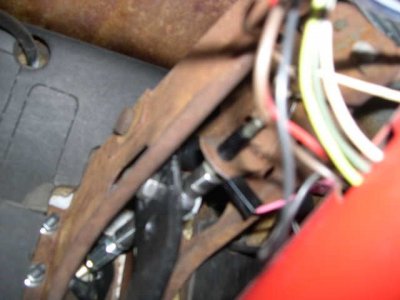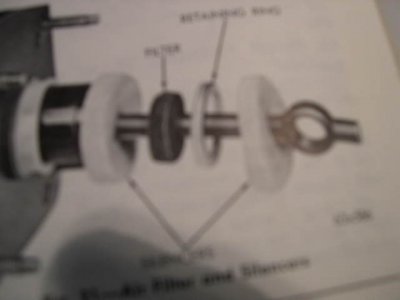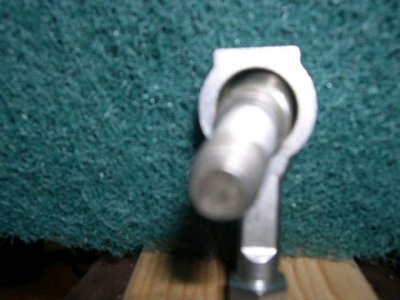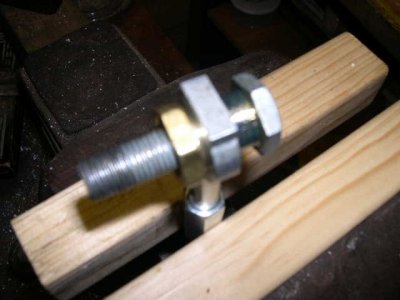Recently had disk brake with power brake install done on my 63 fury. The shop left some work undone leaving a very high pedal among other unfinished work. I got the pedal set lower and fabbed a bracket for brake light switch all works OK. Problem is the pedal has little resistance when stepping on it...like pressing on nothing. Has anyone encountered this if so appreciate any advice. Ron h.
You are using an out of date browser. It may not display this or other websites correctly.
You should upgrade or use an alternative browser.
You should upgrade or use an alternative browser.
brake pedal problems disk conversion
- Thread starter Ron H
- Start date
Well I see I goofed placing my question under later Mopars; 3 years newer than mine...will watch that in the future. Anyway, my guess is the sort of problem I've described would easily be for any year and hope someone has suggestions for me as I'm stuck after repeated stabs at this. Ron H.Recently had disk brake with power brake install done on my 63 fury. The shop left some work undone leaving a very high pedal among other unfinished work. I got the pedal set lower and fabbed a bracket for brake light switch all works OK. Problem is the pedal has little resistance when stepping on it...like pressing on nothing. Has anyone encountered this if so appreciate any advice. Ron h.
kb67mopar
Well-Known Member
It should still have some. How do the brakes work? It's very possible the lines and master are not bled properly and have some air in them. I would encourage you/them to re-bleed starting from the farthest wheel out and moving up.
That sounds like a good idea to bleed; the brakes work great but there's a bit of dead pedal feel just when 1st pressing the pedal and then so little resistance I wouldn't know I was pushing on the pedal without thinking on it. Annoying sensation...It should still have some. How do the brakes work? It's very possible the lines and master are not bled properly and have some air in them. I would encourage you/them to re-bleed starting from the farthest wheel out and moving up.
Thanks!
66Satellite_in_NC
Well-Known Member
Do you have your proportioning valve set up properly?
Can't say if it's all correct or not. Seems like I have fine braking action so didn't think on that being related to the pedal. The shop did the install and since they didn't finish the work I should look into this. Thanks, Ron h.Do you have your proportioning valve set up properly?
mrploww
Well-Known Member
Ron, do you have any pics of the custom bracket you made for the brake light switch? I just converted from manual to power disc and the brake pedal height is fine, but the brake lights are on all the time because the switch is not making contact.
Thanks for any help!
Thanks for any help!
mrploww: The 1st bracket didn't pan out. This was a piece of angle steel drilled to attach to the brake pedal contacting the switch. We went back to more of the original rod looking in the factory manual and this seems to be working fine (a buddy who works at a machine shop made it up for me). The shop that did the install used an absolute pos rod that we couldn't adjust enough to have it return far enough to fully depress the switch. I've posted some pic's of the after and before that might offer you a description. I don't have my notes but we made the part of the rod that contacts the switch a bit longer (I want to recall around 1/4"). The other pic's posted here show the BS rod that westech automotive used; it had around 1/16" slop in it and put in an oil lite bushing to cure that. As it was I dumped that rod for the one we made up. I hope showing you the after/before pic's gives you an idea of what was done. PM if you'd like to chat more.








now that I see how the pic's are arranged in my post reply, the top left you see the new rod installed, top right is the page from the factory manual we reviewed to design the new rod (the shop never gave me back the original parts). The lower left is the rod the shop put in. Note the top is the part that was "supposed" to meet the brake switch and you can see it has little button end to do that (plus being too narrow for alignment to the switch) and also note the slop around the pedal bolt. The LR pic shows the bushing and we kept that for the new rod. In addition to this modification I had to put in a longer threaded rod. Took some playing around to get the adjustments right to have the lower and pedal travel reduced for braking action.
- Local time
- 6:32 AM
- Joined
- Apr 13, 2012
- Messages
- 39,060
- Reaction score
- 142,656
- Location
- Granite Bay CA
Disc brake swaps are a great upgrade but too many times, the "Bolt in kit" isn't always an easy and complete process. There are many kits that use a GM style master cylinder with a bore size too great. This results in a very hard pedal with what feels like too little braking force. I don't know if the pedal linkage is so much different on GM cars that their design has more leverage??? (Making the pedal feel more effective)
Vendors try to use GM based parts in other applications due to availability and cost but what if these parts are just not a good fit in tems of engineering? They might physically bolt up but if the specs are not right, the gains will not be seen.
These GM master cylinders often have a LARGE bore. I had one that was 1 1/16" and the pedal feel was rock hard with brake action so bad that I could not skid on loose gravel! I went to a 7/8" bore master cylinder and the feel was greatly improved.
One last topic: I have seen where some manufacturers have the same size threads for the front brake line port as the rear. This can result in a backwards plumbing situation where the installer (In error) connects the rear brake line to the front brake port & vice versa. This will play hell with proportioning since the front brakes need 65-70 % of the pressure versus the rear.
Vendors try to use GM based parts in other applications due to availability and cost but what if these parts are just not a good fit in tems of engineering? They might physically bolt up but if the specs are not right, the gains will not be seen.
These GM master cylinders often have a LARGE bore. I had one that was 1 1/16" and the pedal feel was rock hard with brake action so bad that I could not skid on loose gravel! I went to a 7/8" bore master cylinder and the feel was greatly improved.
One last topic: I have seen where some manufacturers have the same size threads for the front brake line port as the rear. This can result in a backwards plumbing situation where the installer (In error) connects the rear brake line to the front brake port & vice versa. This will play hell with proportioning since the front brakes need 65-70 % of the pressure versus the rear.
Similar threads
- Replies
- 19
- Views
- 1K
- Replies
- 15
- Views
- 2K
- Replies
- 16
- Views
- 2K
















